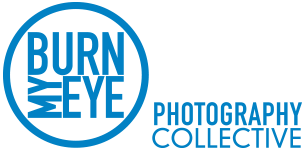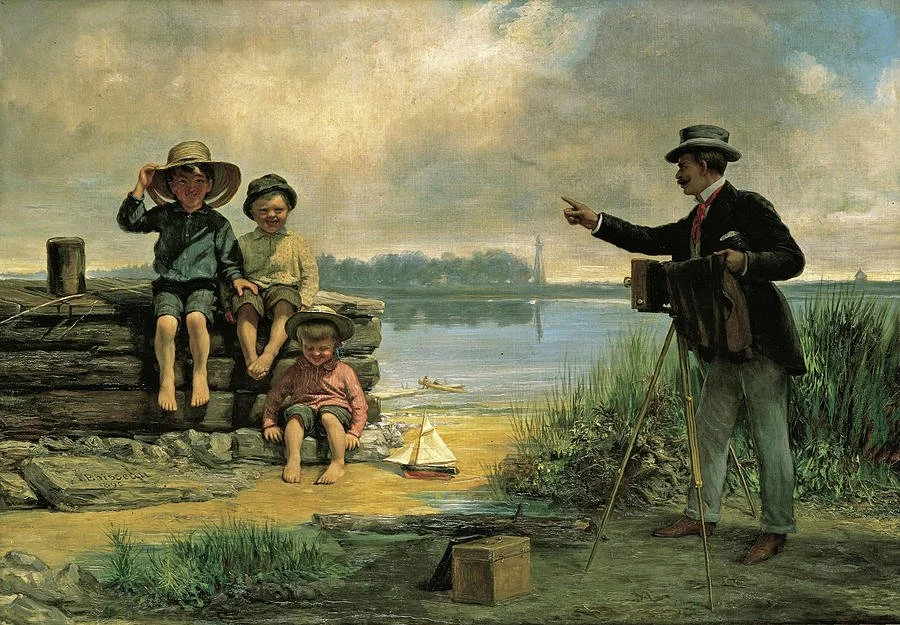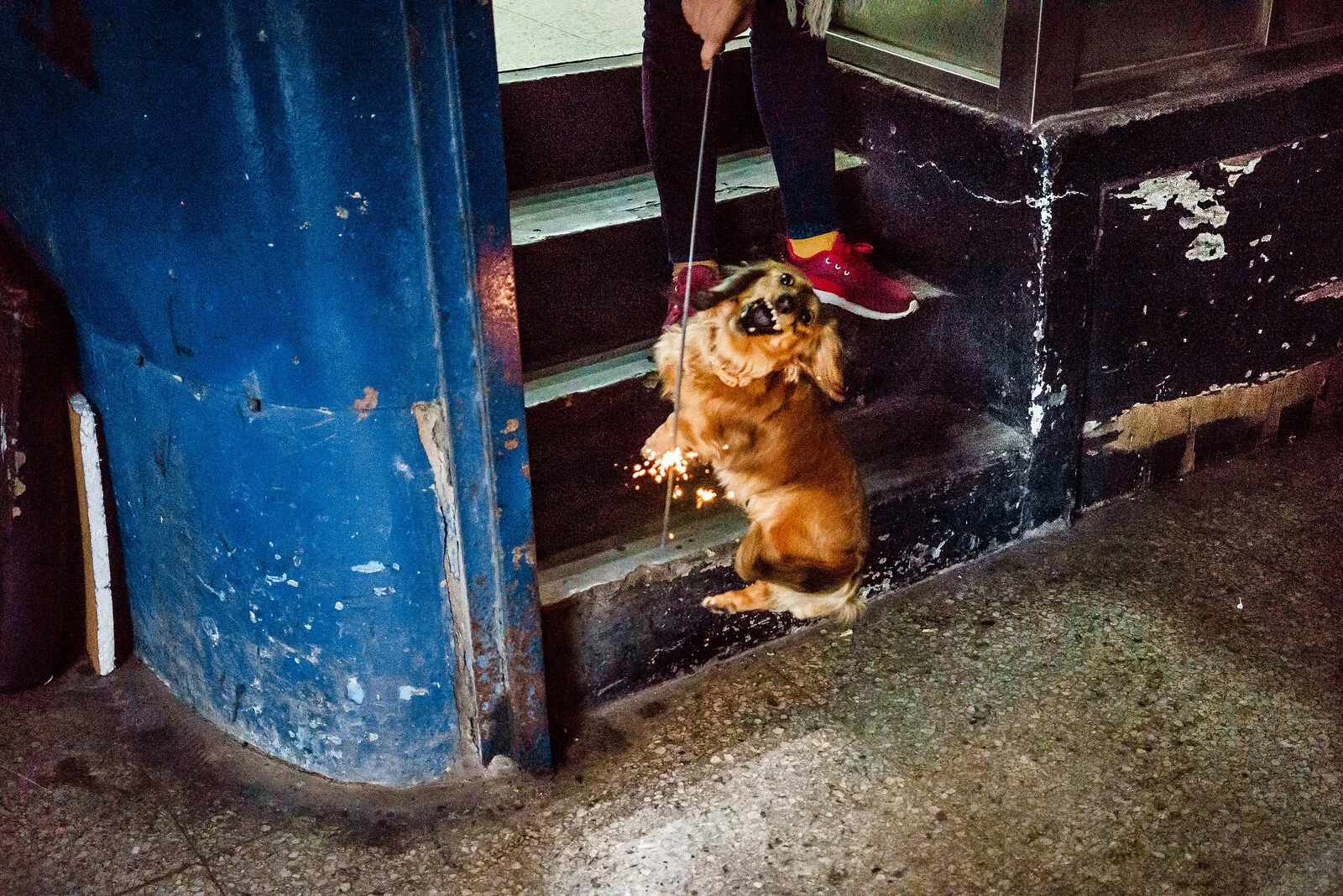Who are you ?
If only I knew!
I’m a French art director/graphic designer and an “amateur” analog photographer, based in Paris and the founder/curator/designer of Underdogs, a magazine about contemporary photography that I started publishing in 2014. I love tigers, horses, dogs and animals in general much more than human beings, to be honest.
What was the trigger, or inspiration, that led to your taking up photography?
In high school, I was following a literature class that included drawing as a speciality.
But I quickly realized that I was not super good at drawing. At that time, I hung out with friends who were musicians, and it bothered me that I was doing nothing while they were jamming together. Taking pictures of them playing came to mind. Once I started, I found I enjoyed the medium and the sensuality of the camera itself, beyond the subjects of my pictures. My pictures back then were very bad, though, and I decided to learn photography, so I enrolled in a photo school. After the first year, it was a waste of time; I had to leave school because many things went wrong in my life. I quit photography for years and came back to it in 2011. But I’ve always been fascinated by the fact that a photograph is like a piece of a huge puzzle called «the world», a little moment of something that will never happen again, a moment (even for still life or landscape photography) that you'll never see the same way again.
What do you hope to communicate or describe with your work?
I am certainly a complicated person in real life, but not at all as a photographer. I actually don’t like calling myself a photographer. According to my photo idols and references, I’d be setting the bar too high, and I know I will never reach it. I’d rather say that I have cameras and take pictures. It sums up very well how I approach photography. Talking specifically about my work is difficult; I’d rather let my images reveal themselves. I don’t try to document anything, and I don’t know what I want to communicate either, perhaps just the way I see the world I live in.
I never plan anything far ahead; I just go out, look around, and press the shutter each time something catches my eye, or even when it doesn’t, in the hope of nice surprises. But maybe the main reason is that I take photos because it makes me feel alive and attentive to my surroundings and allows me to build, piece by piece, my own world. It might be the one I would feel more comfortable living in. I once heard in an interview, «When we describe pictures, what’s in them, it doesn’t say very much about why the picture is good or interesting or bad ». I couldn’t agree more.
Has your relationship with photography changed over time, and if so, how?
Yes it has. But I guess that’s the case for all of us. When I started photography, I used analog cameras because digital did not exist, but when I came back to it six years ago, I bought a digital Nikon and was not happy with the color rendering, and the weight and multiple options drove me crazy. At that time, I posted on Instagram and made «virtual friends». I started talking a lot about photography with a guy based in Vienna. He mostly shot analog but also some digital. One day, he told me that he had decided to give up shooting digital to use only film.
Little by little, the thought came to me that it would be interesting for me to do the same. I brought my old analog Nikon out of the closet and shot an expired roll of Kodak film. I was so amazed with what came out that I stuck with it (even though I must now admit that the pictures were not that great). Since then, I have bought different types of cameras, from rangefinders to point-and-shoots. You don’t see and shoot the same way with one or the other, so I find interesting to switch depending the location, the situation or the light. But since I carry my Olympus µ(mju) in my pocket wherever I go, I have numerous pictures from it.
Paris was a place where I used to enjoy wandering around, but it’s no longer attractive to me, so I eagerly await days off work to escape anywhere else.
On another level, curating Underdogs has also changed the way I look at photographs, including my own. The fact that I bury myself in photographers’ streams has opened my mind to the medium. I think some shots I’ve taken wouldn’t exist if I hadn’t seen some of these works online.
To sum it all up, I think I learn something every single day from the people I follow on social media as much as I learn from “the masters.” – I hope they learn a bit from me too (not the masters, of course). And last but not least, I have gained much from the dialogues I’ve had with other photographers, because staying in one position does not help in opening your mind and spirit.
Select some of your photos and talk about how they came to be, as well as how they reflect your working methods.
If I had working method, I’d probably getting better! The only unchanging thing is the number of exposures I take, never more than three of the same subject. You know my method is nothing more than seeing, snapping and moving on.
But let’s go! I picked five that were taken in different ways:
The can of Coke:
I was at work, and was on my way back from the drink vending machine with my can of Coke in hand when I spotted this red leather sofa. I don’t know why, but it naturally came to me that I had to take a picture of both, so I finished the can and threw it on the couch and click-clack. Snapped it twice and left.
The dogs standing next to the stop sign:
When my friend Eric and I reached Douarnenez harbour, we stumbled upon this amazing old fish shop that could have been a photo subject itself, but I thought that making the dogs part of the scene could completely change it. I found it interesting that the red leash was a cool echo to the stop sign. So let’s say it was a last-minute staging.
Red shoe:
While wandering around a retro car show, I saw this foot wearing a red shoe and the cone; I didn’t think, I just took it quite quickly, click clack Contax and bye!
The basket of strawberries:
I’d been walking for hours in Warsaw and was headed back to the hotel when I saw this guy coming towards me. I took my camera out of my bag, but he passed me by walking very fast, so I turned around and pressed the shutter once without really having time to frame properly. It’s not that memorable a picture, but I like the dynamic angle.
The cross:
The last one I’ve chosen is because I’m not used to to working that way.
While driving, my friend Eric and I spotted a small cemetery like the ones you can only see in small villages.
We pulled over to have a look, but it was obvious that the subject would be far better at night. So we came back later with a powerful torch and started playing with it in addition to the flash. I took a couple of pics and kept my fingers crossed until I got the film back from the lab. I was quite happy with that one.
Thanks a lot for the invitation.
View Underdogs Magazine here
View more photos by Isa on Instagram





